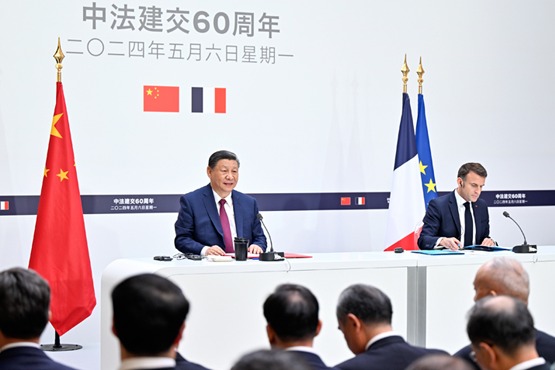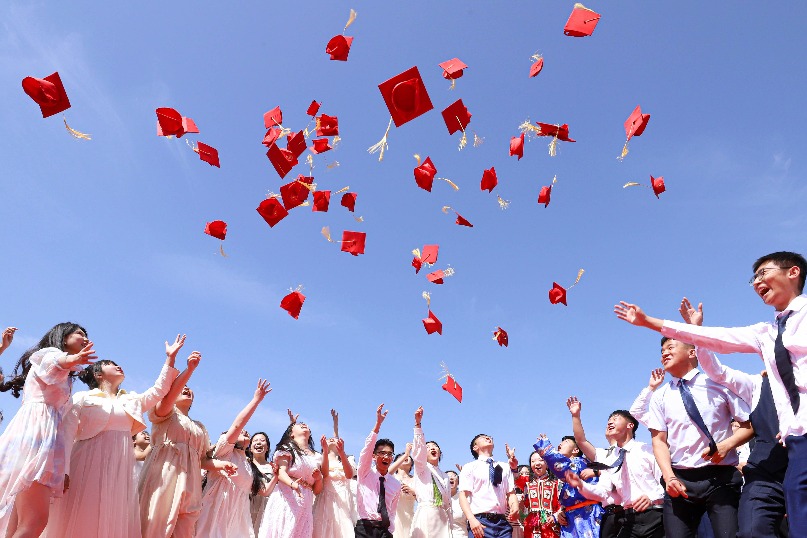Chinese researchers make breakthrough in Quantum Hall Effect

A team comprising researchers including Li Tingxin and Liu Xiaoxue from Shanghai Jiao Tong University and Zhang Yang from the University of Tennessee in the United Stated recently designed a novel device which they used to observe integer and fractional quantum anomalous Hall effect (IQAHE and FQAHE), one of two concurrent and independent experimental achievements that provide conclusive evidence of FQAHE.
The groundbreaking research initiates the exploration of fractional charge and fractional statistics of quasiparticle excitations under zero magnetic field conditions, providing insights into the research of topological quantum computation.
Their findings have been published in Phys. Rev. X and have been highlighted by the editors in the "Featured in Physics" section, the researchers said at a news conference on Thursday.
Researchers said they designed a small-angle-twisted bilayer MoTe2 moiré superlattice device, and were able to perform the observation through electrical transport measurements using the device.
The Quantum Hall Effect is one of the most remarkable discoveries in physics. The first manifestation of the Quantum Hall Effect is (IQHE), which was observed in Si MOSFET at low temperatures and high magnetic fields in 1980 by Klaus von Klitzing, who was awarded the Nobel Prize in Physics in 1985.
The defining feature of IQHE is the quantized Hall resistance, an integer value that depends solely on fundamental physical constants and remains unaffected by the specific parameters of the system.
Following the application of even higher magnetic fields and cooling to lower temperatures, FQHE was discovered in 1982 by Dan Tsui and Horst Störmer, both of whom were awarded the Nobel Prize in Physics in 1998.
FQHE is characterized by fractional quantized Hall resistance. It exhibits topological orders arising from strong Coulomb interaction between electrons, and shows long-range quantum entanglement and fractional charge excitations. Some quasiparticle excitations in fractional quantum Hall states may also obey non-Abelian statistics, making it as one of the important candidates for topological quantum computation.
A challenging question has been whether it is possible to achieve integer and fractional quantum Hall states without the presence of an external magnetic field, for example, the realization of integer and fractional quantum anomalous Hall effect (IQAHE and FQAHE).
The research was praised by reviewers as a breakthrough in the field. They also said that the original novel device fabrication method is paving the way for subsequent studies.
This study opens the door to the study of novel material properties, such as fractional charge excitation and anyonic statistics under the condition of zero magnetic field, and provides new possibilities and opportunities for topological quantum computing and other research, said experts.
- Full text: China-France Joint Statement on the Situation in the Middle East
- Former head of China Tobacco arrested
- Top legislature inspects implementation of Intangible Cultural Heritage Law
- Second State-level rural skills competition to be held in Guiyang
- Patients benefiting from unified healthcare systems
- China, France to enhance global governance cooperation on artificial intelligence




































